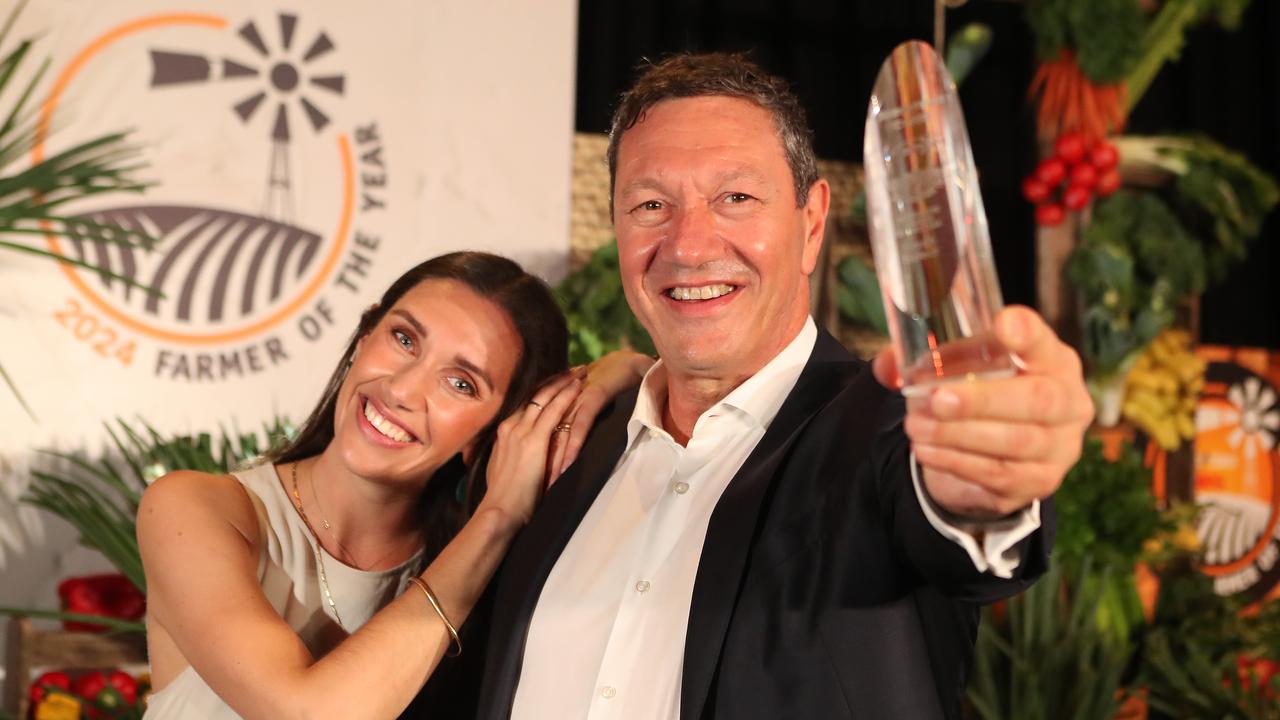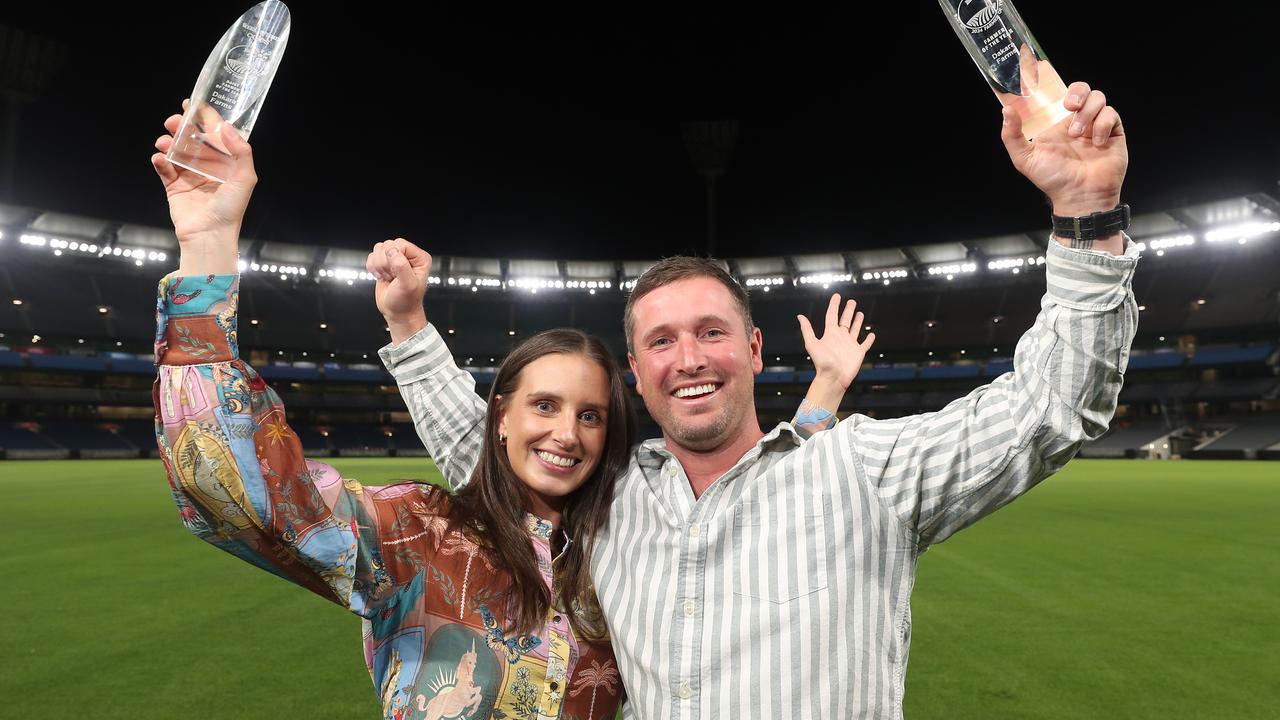Allan's spear delight
ASPARAGUS is a fast-growing and lucrative crop in South Gippsland.

ASPARAGUS is a fast-growing and lucrative crop in South Gippsland.
The locals call it "the swamp".
To you and me it's the land around Koo Wee Rup in South Gippsland.
Such is the richness of the soil here, it's the asparagus capital of Australia.
"We call it the swamp because that is what it was. It's a drained wetland," asparagus farmer Allan McDonald said.
"If you come down at a certain time of year you'll see why. I have photos taken from last year where the farm was totally under water.
"In normal rainfall in winter the soil is very sticky.
"Because it's reclaimed swamp, it's peaty.
"You can grow whatever you want," he said.
"For a long time they grew mixed veg here but I think asparagus is easiest."
Compared to the more challenging industries of dairy farming or some orchards, asparagus has its benefits as a lucrative, fast-growing crop.
Allan farms 57ha of asparagus on his wife Anita's parents' property at Dalmore, adjacent to Koo Wee Rup, and he is also vice-president of the Australian Asparagus Council.
His business, Golden Mile Fields, which he runs with father-in-law Arthur, supplies product to neighbouring exporters Momack, who package and export domestically and internationally, a business decision made to ensure "I see my kids for dinner at night". Allan said the yield was a "very rough average of four tonnes to the acre" because, by its nature, asparagus closely mimicked the weather.
"We can cut 20 pallets today and tomorrow it could be 10 because there may be a cool change in the afternoon," said the 43-year-old father of two young girls, who added that in peak time he can work up to 14 hours a day.
"Yields can vary week to week or day to day.
"One weekend in 1995, I cut the same paddock Saturday morning, then Saturday night and again at Sunday at 3am, it was perfect conditions.
"I don't have time to watch it grow but it can be very fast-growing, ready to cut at nine inches today (22.9cm) and nine inches again tomorrow."
Asparagus grows best at about 24C by day and 13C by night, loving warmth and some humidity, and is averse to cold and wind, requiring enough water that "its feet aren't too wet for too long".
He said hail damaged asparagus spears, bending them and making them cosmetically unappealing.
In October, Koo Wee Rup was hit with a 20-second hail storm.
"One of the exporters said that 20 seconds cost the industry $1 million. Yes, they grow back quickly, it's not like losing the entire crop to a frost, but it still costs us," Allan said.
An asparagus plant produces for up to 15 years - with peak production at about year six - which means it doesn't need to be continually replanted.
"It's a big commitment to get up and running. Once you are in, you are in boots and all."
Allan plants hybrid F1 seeds in the on-farm nursery in August, planting them out the following year in June and July.
In order not to stress the plant, they wait until the following year to harvest, with peak production at about year six.
Asparagus plants can last up to 15 years but workers dislike harvesting from these plants as they spread out beyond their rows; so generally plants are pulled out after about a decade.
"When they spread out it's harder work to get the same yield," Allan said.
"But we need to have it in about 10 years to make the time and investment worthwhile."
Harvest is from September to December, although the changing climate and this year's unseasonal warm temperatures created an August market that, Allan said, was not necessarily a good thing.
"In the past it was good but markets are not geared up for it any more," he said.
"In Japan they take their own product first and don't want as much of ours, and the local market can only take so much as well."
Once harvest has finished, plants turn to ferns when uncut, which brown and die back.
Allan sprays weeds and fertilises, finishing up in later March when plants become dormant.
He sprays for weeds - as well as fungus rust and phytophthora, common in the industry - early to ensure no herbicide residue is in product ready for market.
"In Japan our product is marketed as green. The whole industry here has such a good record and if we get a positive (herbicide) testing Japan from any producer, they wouldn't want Australian asparagus anymore."
Fertiliser, he said, was applied more as a habit, such was the quality of the soil.
Allan said his work with the Australian Asparagus Council was largely around marketing budgets, research and development, herbicide trials and funding.
But strangely enough, that very peaty swampiness that is the foundation of the Koo Wee Rup industry, has also been the cause of recent petitions and lobbying of government.
The Asparagus Council has been in talks with Melbourne Water to better maintain drainage to ensure less flooding.
"There was so many years of drought that maintenance of the drainage was eased and it's now not at the standard it was," Allan said.
"We've made submissions to a government inquiry and served a petition to Parliament to get something done."
Given that he is neighbours with his competitors is there ever any skulduggery involved?
Allan said because their own business model - of supplying to a larger distributor - was different to most, he wasn't exposed to the same level of business competitiveness.
"It's like any country town, everyone knows everyone and we all get along fairly well," he said.
"You know they are competitors but it's still a community. Most people have gone to school together."


